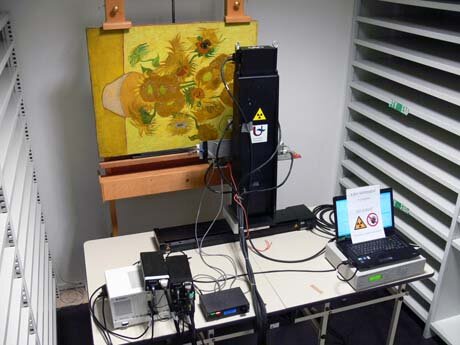Macroscopic X-Ray Fluoresence scanning (MAXRF) is a technique that allows to visualize the elemental distribution in different types of flat macroscopic samples such as paintings or illuminated parchments. This is achieved by scanning the surface of the sample with a focused or collimated X-ray beam of (sub)mm dimensions and analyzing the emitted fluorescence radiation. This technique is non-invasive, non-destructive and can be performed in situ.
Due to the penetrative nature of X-rays, elements present at and below the surface contribute to the obtained elemental distribution images. The method is highly valuable in the investigation of historical paintings, as elemental distribution images can reveal hidden sub-surface layers, including modifcations made by the artist or restorations on the surface. In this way it can provide a unique insight into the creative process of the artist(s) and the painting's conservation history. An advantage of MA-XRF is that it has relatively short acquisition times (typically 100-200 ms pt-1; approx. 24h for a 57x 60 cm2 zone) and that all elements starting from Mg are detected simultaneously.
X-ray sources:
- XOS Rh-Kα: 0.2 x 0.2 mm2
- Moxtek Magnum Rh-Kα
XRF detector: Hitachi Vortex-EX silicon drift detector
Motorized sample stage: motorized stages (57 x 60 cm3; horizontal x vertical)

Ma-XRF scanning experiments at the Van Gogh museum, Amsterdam